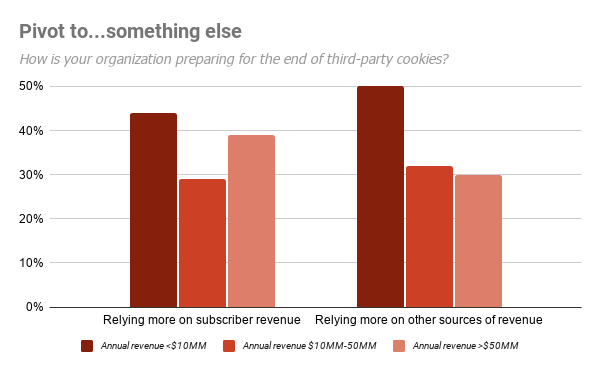Media Briefing: Publishers are polling site visitors for first-party data
By Tim Peterson
In this week’s Media Briefing, senior editor of research and features Max Willens looks at how publishers are using polls to solicit site visitors for information to fill their first-party databases.
- Can I have your data?
- Cheat Sheet: Apple’s email privacy push
- 3 questions with Times Tech Guild’s Kathy Zhang
- Trans journalists struggle to correct bylines, Reuters’ executive editor Gina Chua talks about transitioning during the pandemic and more
Can I have your data?
A growing number of publishers are trying to help solve their first-party data problems by literally asking as many questions as possible.
At any given time, Group Nine Media — the publisher that operates the Dodo, Thrillist and NowThis — is running 10 to 15 brand lift studies, two or three different site-specific single-question surveys at the foot of its articles, as well as a handful of larger research projects that typically run a couple dozen questions. While some of the research is done in partnership with Group Nine’s advertisers, most of it is done so that Group Nine can enrich the picture it has of its audience, both for future ad sales opportunities as well as content development and distribution strategy.
“We want to be as present as we can in all the touchpoints we have with our audiences,” said Bobby Lacivita, vp of research and measurement at Group Nine. Significant advertiser interest in the data hasn’t hurt, though: “In 2020 there was a sudden new surge of demand [for first-party data],” Lacivita added.
The key hits:
- Publishers are presenting questions to site visitors to collect more first-party data.
- The prevalence of polls risks becoming another online nuisance.
- But publishers have little choice other than to try to glean more insights into their audiences to appease advertisers.
Different publishers have spent years relying on their readers for consumer insights. Magazine publishers such as Condé Nast have had big panels for decades. But the events of last year ramped many publishers’ research efforts up considerably, both because of the coming cookie changes and because advertisers were suddenly ravenously hungry for consumer insights, as the pandemic, then racial justice protests, then the election scrambled consumer sentiments and behavior.
“Publishers knew this was a need for years, but they didn’t always have what they needed to act on it,” said Shachar Orren, the chief marketing officer of Ex.co, a vendor that sells several tools that integrate questions and polls into website content. While Ex.co’s tools can be used for lots of different purposes, Orren said that, in the past six months, the number of times publisher clients have mentioned data collection among their needs has shot up by 60%.
What remains to be seen is whether this kind of tool becomes the next auto-playing video, or offer to sign up for push notifications, or content-blocking interstitial — a kind of media-bred curiosity that uglies up the internet while delivering little value to anybody except advertisers.
Publishers have to figure this out, in part, because the other side of the industry is stepping up efforts to solicit information from …read more
Source:: Digiday





